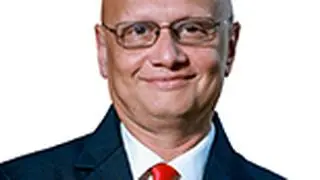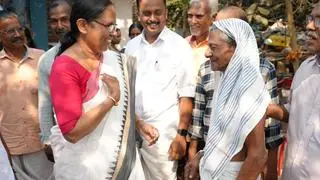A year after the deadly second wave of Covid-19 last May, some healthcare practices have seen a long-term adoption, while other areas still have some ground to cover.
Increased adoption of digital healthcare, improved access to crucial medicines and expansion in diagnostic service capabilities are, for example, some positive outcomes. But more work is required on open access to real-time information and data on hospital beds and other medical essentials besides death registrations, and patient documentation.
During Gujarat’s second wave, Ahmedabad Hospitals & Nursing Homes Association (AHNA) saw a free flow of information on daily bed availability for ICUs, Oxygen or general beds etc., through its website. Other civic bodies operated similar information platforms, but they did not map the ground reality.
Bharat Gadhavi, President- AHNA told Business Line, “Information sharing is a key issue that requires attention during the pandemic like this. This is an area requiring a robust real-time healthcare facility information sharing system.”
In Kerala, for example, the learning from Nipah virus epidemic couldn’t help authorities much.
Experts noted that the only saving grace was that the case fatality rate associated with the Nipah virus at 40-80 per cent was not as high with Covid. The latter needed a vastly superior level of preparedness on the part of the State Health Department. The vaccination drive and the natural immunity gained from infections on a mass scale from May last year might have given the department valuable experience tackling the fourth wave, if it were to occur.
Shortage of Oxygen and ventilators across the country had caused panic during the peak of the second wave. On seeing the severe shortage of oxygen, the Centre announced setting up oxygen plants using pressure swing adsorption (PSA) technology at district hospitals. The private sector too ramps up production capacity for ventilators, until then imported.
Vadodara-based Max Ventilator ramped-up ventilator production during the second wave. The company is ready to meet any surge in demand and any kind of ventilators required for any unforeseen situation. Last year it witnessed a 15-times increase in ventilator demand. During the year, the company innovated High Flow oxygen Therapy (HFOT) devices which improve the chance of survival and entail less operating costs than a traditional ventilator.
Ashok Patel, CEO and Founder, also reduced the dependence on imports and increased the local sourcing by supporting local component producers. “We have now begun to make our own compressors and major printed circuit boards. Moreover, we are even helping local manufacturers produce components that we earlier sourced from outside the country. Now we ensure that 75 percent of our components are procured locally within the country,” he said.
Digital adoption
Ameera Shah, MD of diagnostics player Metropolis and vice president of NatHealth, commented, “There has been a large capacities built for covid testing now. With that capacity there is more ability to do molecular biology tests across the country.”
Shah adds, consumers for the first time started expecting tech-enablement in healthcare as there was no way of interacting through a brick and mortar format. And this led markets to open for huge funds that started flowing for health-tech players. For the industry, a strong lesson comes from using technology at the front-end i.e. for consumer engagement and at the back-end for processes and systems.
The second wave had also seen abuse of medicines amidst panic. “There was panic as the demand spiked because everyone wanted medicines immediately. Some were doctor-prescribed some bought on their own,” said Ankur Agarwal, co-founder of generics medicine retail chain Medkart.
He noted that the nature and type of medicines prescribed between the second and third waves differed significantly. Popular Covid medicines such as ivermectin, favipiravir or remdesivir were no longer seen during the third wave after realising the undue usage of some of them. On the panic-driven demand for medicines, Agarwal notes that it might happen when there are more cases and higher demand. “The sharper the peak, more are the chances of supply disruptions for all those specific molecules. But despite having learnt a lesson from second wave, we are not sure if we are better suited to handle a similar situation if it comes again.”







Comments
Comments have to be in English, and in full sentences. They cannot be abusive or personal. Please abide by our community guidelines for posting your comments.
We have migrated to a new commenting platform. If you are already a registered user of TheHindu Businessline and logged in, you may continue to engage with our articles. If you do not have an account please register and login to post comments. Users can access their older comments by logging into their accounts on Vuukle.